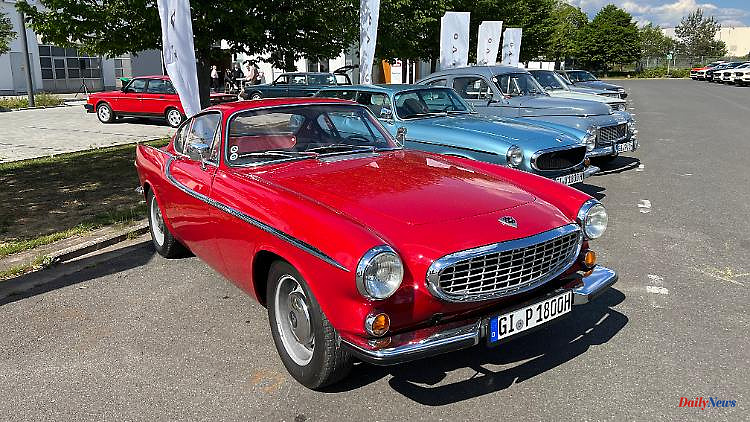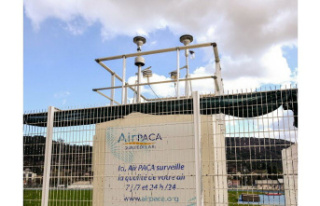Old Swedes, all just conservative-edged limousines and boring station wagons? At a beauty contest, Volvo recently showed that the Scandinavians have produced very different design gems.
This anniversary was worth a beauty contest for Volvo: 95 years ago, the first Volvo ÖV 4 "Jakob" rolled off the assembly line on the island of Hisingen near Gothenburg. A conservative touring car that gave no indication of how quickly Swedish streamlines, Amazons, sports coupés and station wagons would attract worldwide attention. In Germany, Volvo got off the ground rather laboriously, first in Frankfurt and from 1965 in neighboring Dietzenbach. Volvo has just clad the Dietzenbach site in new Scandinavian-style architecture. And so the Volvo community met here to celebrate the brand, which for most Germans embodies a piece of carefree Sweden - like Ikea, Bullerbü or Abba. An image that Volvo has built not only with reliable and safe cars, but also with iconic design language. Almost everyone recognizes a typical Volvo and yet not everyone knows every Volvo, as the beauty contest "95 years of Volvo" showed.
If there is a German region where the history of Swedish automotive culture is alive, then it is the Frankfurt area. Not only the former Saab brand had its headquarters here, Volvo also used the metropolitan region on the Main to get first US Army members and then Germans excited about "Family Sports Cars" such as the Buckel-Volvo PV 444 and Amazon. Under the catchy slogan "Security from Sweden steel", it was later the angular 140, 240, 740, 940 and 850 station wagons that achieved cult status as families' best friends.
Volvo built the big bridge between the present and the future with SUVs from the XC90 to the electric XC40, which also owe their sales success not least to their striking packaging. In fact, right from the start it was the unmistakable design that made the rather high-priced Swedes objects of desire. No bores, but provocative specialties Made in Gothenburg, Bella Italia or small bodies, as the candidates put together by a jury now showed at the Beauty Lane "95 years of Volvo".
From the pre-war era, which produced flamboyant Airstream types such as the Volvo PV 36 Carioca, no model made it into the concours final, but several examples of the first Swedish people's vehicles, the Volvo PV 444/PV 544, did. After all, it was through US models inspired, hunchbacked fastback that made the Volvo brand famous around the world. Beneath the streamlined bodywork: almost indestructible robustness, paired with safety technology, just as it characterized the Volvo P120/P130 Amazon introduced in 1956. The lines of the Amazons were drawn by the legendary designer Jan Wilsgaard, who combined fine elements of Italian design culture with Scandinavian contours.
The history of the P 1800 sports coupé also began with a connection to Italy: the up-and-coming Swedish designer Pelle Petterson designed the glamorous two-door car in Frua’s Italian design studios from 1957, with contemporary fins on the rear as a reference to the rocket age that was just beginning. The Swedish King Carl XVI. Gustaf loved driving this coupé, as did film star Roger Moore, who used it to fight evil in the TV series "The Saint" (Eng. Simon Templar). It is therefore not surprising that this brand icon has now won the Beauty Concours in the age group up to 1975.
This just ahead of the Volvo 1800 ES, which made its debut in 1971 as an evolution of the P 1800. Thanks to the large glass tailgate, the Shootingbrake 1800 ES, designed with breathtaking lines, became famous under the name "Snow White's coffin". Triggering desire was also the mission of the now almost forgotten Volvo C70 Coupé in 1996. After all, this jewel, designed by a young, global design team, should end the era of "Flying Bricks", i.e. retire the last angular bricks of the 850, 900, S/V70 and S/V90 series and make Volvo dynamic for the 21st century bring shape.
However, some specialties from the boxy Volvo era were also able to fascinate the jury and the audience at the 95-year Volvo Beauty Lane. The 262 C, presented in 1977 as a coupé, surprised everyone with a uniquely flat roof structure. This two-door car was built in a small series at Bertone, the design was realized by Jan Wilsgaard based on drafts by Sergio Coggiola. Even one of only five 262 C Solaire Cabriolets built could be admired in Dietzenbach. California-based coachbuilder Solaire had opened the 262 C to North America at Volvo's request, but concerns over crashworthiness ended production. At the 95-year Volvo Concours, however, the daring extravagance of the Solaire was enough for second place among the beauties of the brand built after 1975.
After all, Carrozzeria Bertone built a good 8000 units of the Volvo 780 from 1985: instead of furious Vmax like the competition, this expensive coupé showed a standard luxurious interior, whose noble appearance was only topped by the 1997 Volvo S90 Royale. Back then, there was no way to travel more royally and at the same time more discreetly than in this limousine, which was extended by 15 centimeters, as the Swedish royals also knew. But faster, because there were rapid five-cylinder turbo station wagons à la 850 T-5R, which showed the South German express freighters their rear end made of angular Bohus granite.
In fact, it was the Volvo station wagons that impressed the most with their razor-sharp lines at the 95-year concours. Perhaps because these loading giants awaken sentimental images of long-gone vacation trips and are reminiscent of TV tidbits and Nordic noir thrillers that could not do without a Volvo station wagon. For the jury of experts, a five-door 940 Classic that looked brand new despite the six-digit odometer reading was the Volvo dream car par excellence - the well-deserved victory among the Swedes built after 1975, as the applause of the audience confirmed.












